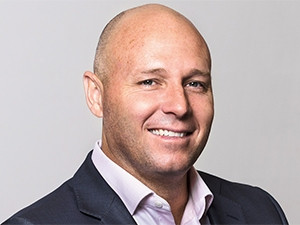Johannesburg, 21 Jun 2016

Legacy back-up technologies simply can't deliver the virtualisation solutions companies need in the current depressed economy, says Gregg Petersen of Veeam. As a result, IT departments are having to rethink how they can help their companies reduce costs but deliver more services.
According to Petersen, this is not a new phenomenon.
"The best thing that ever happened to virtualisation is the global financial crisis of 2008, because budgets were slashed and yet businesses were still required to do more with less - and that's what virtualisation is supposed to offer.
"However, in 2016, Veeam research has shown that organisations are still relaying on legacy technologies to deliver what the modern data centre should be delivering. IT departments are struggling to give businesses the functionality they need."
He quotes Veeam's Availability Report 2016, which asked 1 400 customers across the globe what the difference was between what businesses are expecting around availability and what IT departments are able to deliver.
"An astounding 84% of CIOs said there is a gap between what the business is expecting and what IT can provide. Also, the cost of downtime is going up. The customers told us that total average cost of downtime was S16-million per company in 2016. The biggest reason for this is that 48% of all workloads are mission critical, and CIOs expect this to rise to 52% by 2017."
Petersen says this is forcing IT decision-makers to "rethink their strategies and not rely on legacy solutions to deliver on their business expectations".
"Traditionally, the big thing customers have wanted to know is whether they can recover their data and how fast. Now they are adding a requirement for visibility, and being able to verify the recoverability of the data."
While many companies have "made do" with legacy data centres and systems, Petersen says the new requirements from business on IT departments "cannot be met using outdated systems".
"Those physical machines are getting tired, and the process of getting data off them is long and drawn-out. The guys in Accounts no longer want to wait five days for the guys in IT to get their data back. They want their data within a few minutes. And legacy solutions simply aren't designed to deliver recovery times that can be measured in minutes or seconds."
The problem extends to government departments too, Petersen says, citing the example a council in Australia which covers an area of 2 700 kilometres and is home to 44 000 residents, managed through 50 Windows virtual machines.
"Modern data centre tools have made the council's backup more efficient, saving team members 10 hours each week in hands-on management and freeing them to work on other data centre priorities, such as system administration and server creation. And the new solutions saved the council money because it was 50% less expensive than the physical backup tool they used previously. Plus backup and replication is 50% faster than with the physical backup tool, enabling more frequent backups, and recovery is 90% faster."
Petersen says companies should avoid being "penny wise and pound foolish" by thinking they are saving costs if they do not invest in virtualisation solutions. He says one in six data recoveries fails, meaning data is lost permanently at least twice a year in most companies.
"Companies in SA have on average 15 backup failures a year. That translates into a guaranteed data loss of at least $682 000 each year. Companies simply cannot sustain those losses. And they're losing the data because they're using legacy backup software designed for physical machines, not virtual machines.
"Imagine you're a CIO at a bank. If you lose all the bank's cheque account data, will your board care that you got the back-up software for free?" he concludes.
For more on this topic visit the links below.
https://go.veeam.com/struggle-to-meet-always-on-enterprise-demands.html
https://go.veeam.com/2016-gartner-magic-quadrant.html
Share